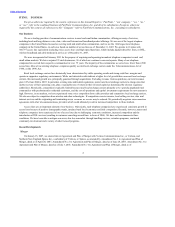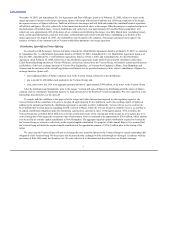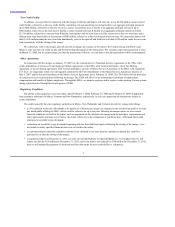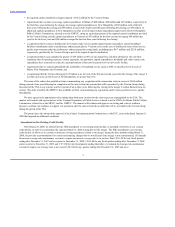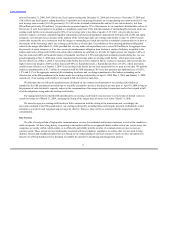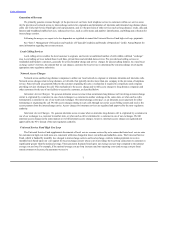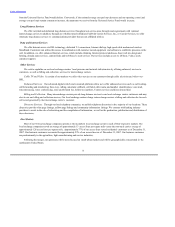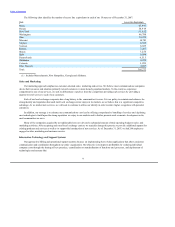FairPoint Communications 2007 Annual Report Download - page 14
Download and view the complete annual report
Please find page 14 of the 2007 FairPoint Communications annual report below. You can navigate through the pages in the report by either clicking on the pages listed below, or by using the keyword search tool below to find specific information within the annual report.
Table of Contents
computers. Many of these competitors have substantially greater financial, technological, marketing, personnel, name-brand recognition
and other resources than those available to us.
The long distance communications market is highly competitive. Competition in the long distance business is based primarily on
price, although service bundling, branding, customer service, billing service and quality play a role in customers’ choices.
Although we currently believe we offer the most comprehensive suite of communications services in our markets, existing service
providers such as wireline, wireless, cable and utility companies are beginning to offer bundled services in our markets. We may face
increased competition from such bundled service providers in the future.
As of December 31, 2007, we employed a total of 1,087 employees. 130 employees of our local exchange companies are covered by
six Collective Bargaining Agreements. We believe the state of our relationship with our union and non-union employees is generally good.
Within our company, 262 employees are employed at our corporate offices and 825 employees are employed at our local exchange
companies.
Following the merger, we expect to have approximately 3,800 employees covered by eight collective bargaining agreements.
We believe we have the trademarks, trade names and licenses that are necessary for the operation of our business as we currently
conduct it. We do not consider our trademarks, trade names or licenses to be material to the operation of our business.
We are subject to extensive federal, state and local regulation. At the federal level, the FCC generally exercises jurisdiction over
facilities and services of communications common carriers, such as us, to the extent those facilities are used to provide, originate or
terminate interstate or international communications. State regulatory commissions generally exercise jurisdiction over common carriers’
facilities and services to the extent those facilities are used to provide, originate or terminate intrastate communications. In addition,
pursuant to the 1996 Act, state and federal regulators share responsibility for implementing and enforcing the domestic pro-competitive
policies introduced by that legislation. In particular, state regulatory agencies exercise substantial oversight over the provision by
incumbent telephone companies of interconnection and non-discriminatory network access to competitive communications providers.
Most of our existing telephone companies qualify as rural local exchange carriers under the 1996 Act. Following the transactions,
the Northern New England business will comprise the vast majority of our lines nationwide. The Northern New England business is
predominately non-rural, and is referred to as the non-rural operations. The regulation of the operations historically conducted by the
Northern New England business differs in certain respects from that applicable to our traditional, rural local exchange operations,
referred to as our existing rural operations.
We are required to comply with the Communications Act of 1934, or the Communications Act, which requires, among other things,
that communications carriers offer telecommunications services at just and reasonable rates and on terms and conditions that are not
unreasonably discriminatory. We are also required to
12


